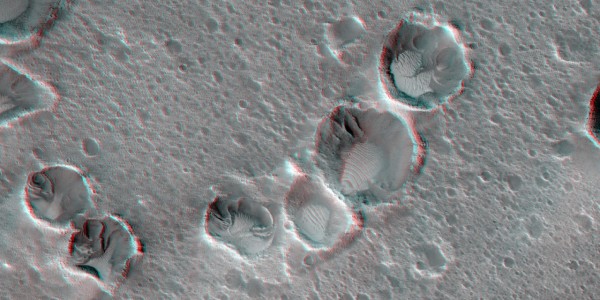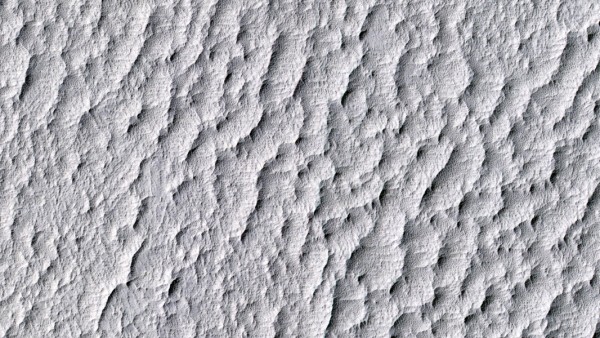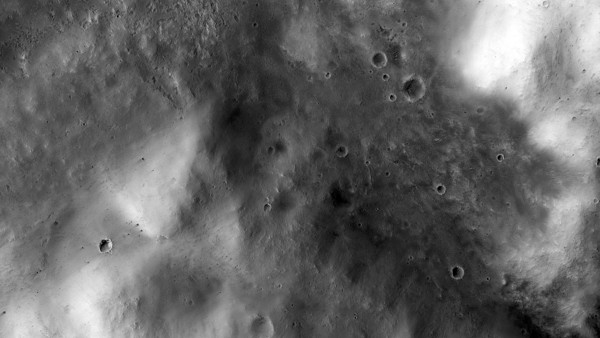
For us sci fi fans, these images and others from NASA’s Mars Reconnaissance Orbiter are a thrill. These are the real-life views of places on Mars where a fictional stranded astronaut Mark Watney – from the book and new Hollywood movie The Martian – undergoes his many trials.
I haven’t seen the movie yet, but I read the book, and it is as excellent and refreshing a work of science fiction that’s come along in some time. With one large and notable exception, The Martian’s young author Andy Weir makes a real effort to be factual, and thus the novel and movie speak of actual locations on Mars for the landing sites for its fictional Ares 3 and Ares 4 missions.
For example, the landing sites for Ares 3 is on a Martian plain named Acidalia Planitia, pictured in close-up above and in a wider view below. For the story’s central character, Acidalia Planitia is within driving distance from where NASA’s Mars Pathfinder, with its Sojourner rover, landed in 1997 … and that fact is key to the story.

The base for the Ares 4 mission was set inside a crater named Schiaparelli, whose dusty floor is shown below. As you can see, it’s a flat region covered over by Martian dust. NASA described this real region on Mars in an October 5 statement:
There are no color variations, just uniform reddish dust. A pervasive, pitted texture visible at full resolution is characteristic of many dust deposits on Mars. No boulders are visible, so the dust is probably at least a meter thick.
Past Martian rover and lander missions from NASA have avoided such pervasively dust-covered regions for two reasons. First, the dust has a low thermal inertia, meaning that it gets extra warm in the daytime and extra cold at night, a thermal challenge to survival of the landers and rovers (and people). Second, the dust hides the bedrock, so little is known about the bedrock composition and whether it is of scientific interest.
Watch the trailer for The Martian. It’s awesome!

The Martian’s fictional astronaut, Mark Watney, also travels to the rim of Mawrth Crater on Mars. The image below shows the nature of this terrain. NASA describes it this way:
The crater rim is not very distinct, and from the Martian surface it would be quite difficult to tell that you are even on the rim of a crater. The terrain is hummocky and rolling, punctuated by smaller impact craters and wind-blown drifts of sand or dust.
If you read the book, or see the movie, or just look at the image below, you’ll get a sense of what makes The Martian such a powerful work of fiction: Mark Watney’s absolute determination in the face of the forbidding, desolate and always-hostile landscape of Mars.

Bottom line: Views of several sites on Mars – real-life locations of the science fiction book and movie The Martian – from the latest weekly release of images from the High Resolution Imaging Science Experiment (HiRISE) camera on NASA’s Mars Reconnaissance Orbiter. They are available online at: https://uahirise.org/martian











